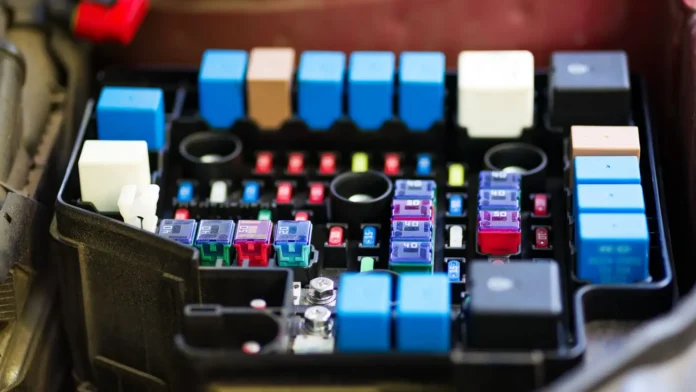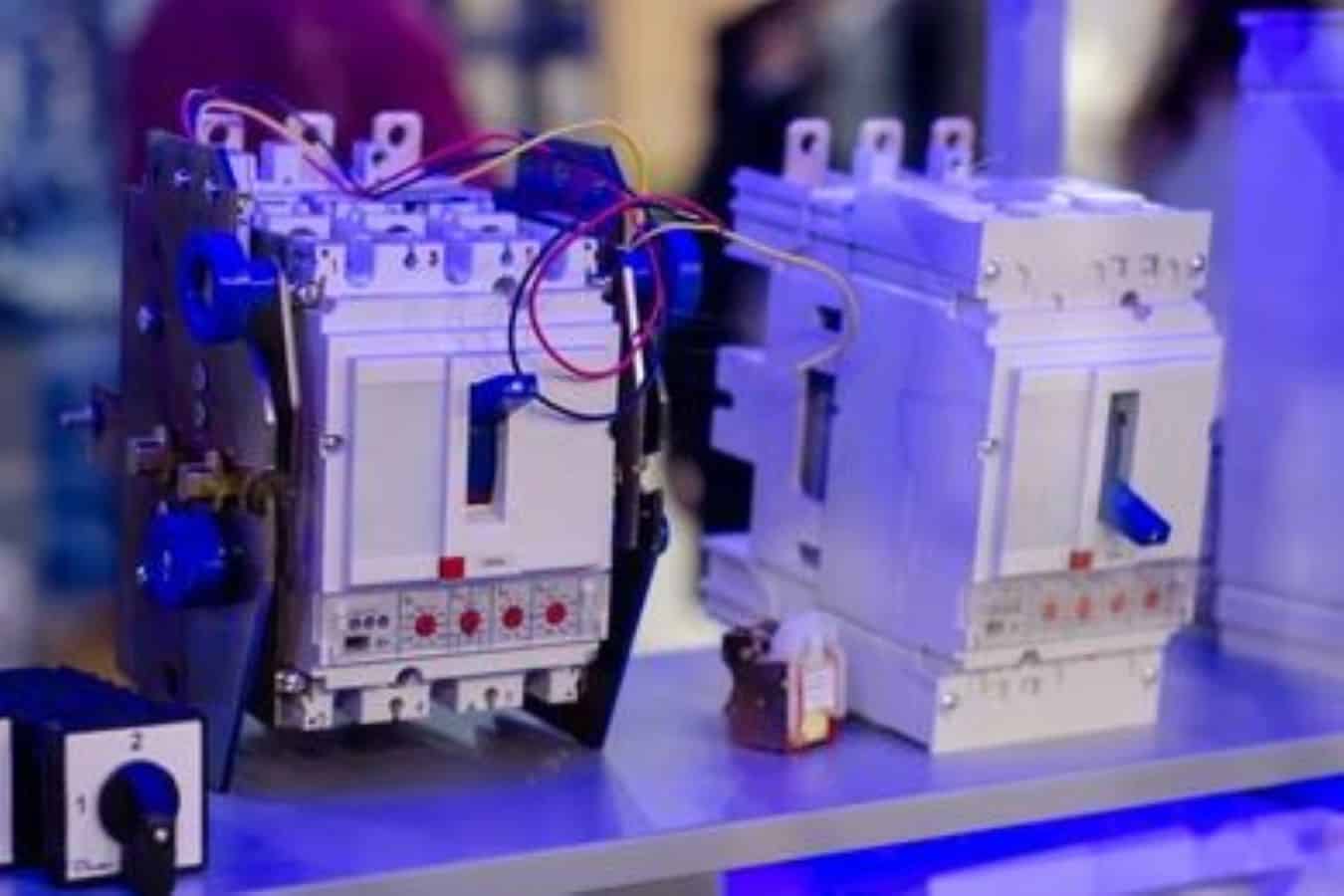What is a relay? Relay is an essential component of modern electronics and electrical systems. Relays are used to control high voltage and current circuits using low voltage signals.
However, understanding how relays work and their applications can be a daunting task for those who are new to the field.
In this post, we will discuss relays by explaining the basics of how they work, their different types, and their applications.
Moreover. we will explore the advantages of using relays and the situations in which they are most useful.
Are you an engineer, a student or someone interested in electronics, this post will provide you with a comprehensive understanding of relays and their uses.
What Is A Relay: Overview
At its core, a relay is an electromechanical device that acts as a switch, allowing the control of high-power circuits with the help of low-power control signals.
It serves as a bridge between the low-voltage control circuit and the high-voltage power circuit, ensuring reliable and safe operation of various electrical applications.
The significance of relays lies in their ability to control electrical circuits that would otherwise be impractical to directly operate with manual switches.
By utilizing an electromagnetic coil, relays can open or close contacts, enabling or interrupting the flow of current in a circuit.
Relays find applications in a wide range of industries, including industrial automation, automotive, telecommunications, and more.
They are particularly essential in situations where precise and reliable control is required, such as in motor control, lighting systems, HVAC (Heating, Ventilation, and Air Conditioning) equipment, and power distribution systems.
One of the key advantages of relays is their ability to provide electrical isolation between the control and power circuits.
This isolation helps prevent potential hazards, such as electric shocks, by keeping the control circuit separate from the high-voltage power circuit.
Additionally, relays offer enhanced protection against voltage fluctuations, overcurrent, and other electrical faults, safeguarding both the equipment and the users.
Understanding the basics of relays and their importance in electrical systems is crucial for engineers, technicians, and anyone working with electrical equipment.
By grasping the fundamentals, you can effectively design, troubleshoot, and maintain electrical systems, ensuring optimal performance and safety.
In the upcoming sections of this blog post, we will go deeper into the working principles of relays, explore the different types of relays, and discuss their diverse applications in various industries.
So, let’s embark on this journey to explain relays and unlock their potential in electrical systems.
What Is A Relay: How Does It Work?
Relays are fascinating devices that play a crucial role in various industries and applications.
To understand how relays work, it’s important to grasp the fundamental principles and components that make them function.
At its core, a relay is an electrically operated switch that uses an electromagnet to control the flow of current.
It consists of several key components working in harmony.
The heart of the relay is the coil, which is typically made of copper wire. When a current passes through the coil, it generates a magnetic field.
This magnetic field then attracts a movable component known as the armature or relay switch.
The armature is usually made of a ferromagnetic material like iron.
When the coil is energized, the armature is pulled towards it, closing the circuit and allowing the current to flow through the relay.
Another vital component of a relay is the set of contact points. These contacts are responsible for opening and closing the circuit.
When the coil is de-energized, the magnetic field dissipates, causing the armature to return to its original position.
As a result, the contact points separate, breaking the circuit and stopping the current flow.
Relays can have different types of contact configurations, including normally open (NO), normally closed (NC), and changeover (CO).
In a normally open relay, the circuit remains open when the coil is not energized, while in a normally closed relay, the circuit is closed by default.
Changeover relays, as the name suggests, can switch between multiple circuits.
Understanding these basic principles and components is crucial for comprehending how relays function in various applications.
From controlling high-voltage systems to automating processes, relays are versatile devices that provide reliable switching functionality.
Whether it’s in industrial automation, automotive systems, or home appliances, relays are employed to control motors, solenoids, valves, lights, and much more.
They serve as an interface between low-power control circuits and high-power loads, ensuring safety and efficiency in electrical systems.
Different Types Of Relays And Their Specific Applications
Understanding the different types of relays and their specific applications can help clarify their functionality and enable you to select the appropriate relay for your specific needs.
Electromechanical Relays
These relays use an electromagnet to control the switching mechanism.
They are widely used in industrial applications, including motor control, lighting control, and power distribution.
Electromechanical relays are known for their durability and ability to handle high current and voltage levels.
Solid State Relays (SSRs)
Unlike electromechanical relays, SSRs do not have moving parts.
They use semiconductor devices, such as thyristors or triacs, to perform the switching operation.
SSRs are commonly used in applications that require fast switching, such as in heating systems, industrial automation, and power supplies.
They offer silent operation, long lifespan, and high reliability.
Reed Relays
These relays consist of a pair of magnetic reeds enclosed in a glass tube.
When a magnetic field is applied, the reeds are drawn together, completing the circuit.
Reed relays are popular in telecommunications, test equipment, and medical devices due to their compact size, low power consumption, and low contact resistance.
Time Delay Relays
As the name suggests, time delay relays introduce a delay before the switching action occurs.
They are commonly used in applications where a specific time delay is required, such as in motor control, lighting control, and industrial process control.
Latching Relays
Latching relays maintain their state even after the control signal is removed.
They are widely used in applications where power consumption needs to be minimized, such as battery-powered devices and memory backup systems.
Protective Relays
These relays are specifically designed to protect electrical systems from faults, such as overcurrent, overvoltage, or under frequency.
Protective relays play a crucial role in preventing damage to equipment and ensuring the safety of personnel.
Understanding the different types of relays and their specific applications allows you to make informed decisions when selecting relays for your projects.
By choosing the right relay for the job, you can ensure optimal performance, reliability, and safety in your electrical and electronic systems.
Relay Contacts: Normally Open (NO) and Normally Closed (NC)
Relay contacts play a crucial role in the operation of relays, and understanding the differences between normally open (NO) and normally closed (NC) contacts is essential in harnessing the full potential of these electromechanical devices.
Normally open (NO) : Relay Contacts –
Let’s start with the normally open (NO) contact. As the name suggests, this contact is in the open state when the relay is not energized or activated.
In other words, there is no electrical connection between the NO contact terminals.
When the relay is energized, the NO contact closes, creating a pathway for current to flow.
This closure of the NO contact allows the relay to control the activation or deactivation of various electrical circuits.
It is commonly used to turn on lights, motors, or other devices when the relay is triggered.
Relay contacts: Normally Closed (NC)
On the other hand, the normally closed (NC) contact is exactly the opposite of the NO contact.
In its resting state, the NC contact is closed, establishing a continuous electrical connection between the NC contact terminals.
When the relay is energized, the NC contact opens, breaking the electrical circuit and interrupting the flow of current.
The NC contact is often employed in applications where it is necessary to deactivate a circuit when the relay is activated.
For instance, it can be used to shut off power to a device or sound an alarm when triggered.
By comprehending the behavior of NO and NC contacts, you can effectively design relay-based systems that suit your specific needs.
It’s important to note that relays can have multiple NO and NC contacts, providing flexibility in controlling various circuits simultaneously.
Whether you are working on industrial automation, automotive applications, or home projects, understanding relay contacts is key to successfully utilizing relays in your electrical systems.
So, take the time to grasp the basics and explore the diverse applications where relays can be a valuable asset.
Functions Of Coils And Electromagnetic Forces In Relay Operation
Investigating the function of coils and electromagnetic forces in relay operation is essential to comprehending the fundamentals of relays.
A relay’s coils, which are the main part in charge of its operation, are its heart.
When an electric current flows through these coils, which are typically constructed of copper wire wound around a core, an electromagnetic field is produced.
A magnetic field is produced by the coil when power is introduced to it.
Relay components that are movable armatures are attracted or repelled by this magnetic field.
The relay’s contacts can be switched by the movement of the armature, allowing the current to flow or be stopped as needed.
The strength of the magnetic field produced by the coil determines the force exerted on the armature.
This force is directly proportional to the amount of current flowing through the coil.
Therefore, by controlling the current, the relay can be operated, and the contacts can be opened or closed accordingly.
Because they can provide electrical isolation and amplification, electromagnetic forces are important in relay functioning.
Electrical signals can be managed even in the absence of a direct electrical connection thanks to the coils and armature that physically divide the input and output circuits.
Applications where safety and protection against voltage spikes or surges are critical will find this isolation to be especially relevant.
Furthermore, relays can act as amplifiers by utilizing a small electrical signal to control a much larger electrical load.
The coil’s electromagnetic force allows a low-power control circuit to switch high-power loads, making relays suitable for various applications where there is a need to control larger electrical devices or systems.
Advantages And Disadvantages Of Relays Compared To Other Switching Devices
Relays have been widely used in various industries for many years, but how do they compare to other switching devices?
In this section, we will explore the advantages and disadvantages of relays to help you understand their unique characteristics and applications.
Advantages Of Relays
Ability To Handle High Power Loads
One of the key advantages of relays is their ability to handle high power loads.
Unlike solid-state switches, relays can handle large currents and voltages without the risk of overheating or failure.
This makes them ideal for applications that require switching heavy-duty electrical equipment or controlling high-power systems.
Versatility
Another advantage of relays is their versatility.
They can be used in both AC and DC circuits, making them suitable for a wide range of applications.
Whether you need to control motors, lighting systems, or complex industrial machinery, relays can provide reliable switching and control solutions.
Relays also offer excellent isolation between the control circuit and the load circuit.
This means that the control circuit, which is typically low voltage, is separated from the load circuit, which can be high voltage or high current.
This isolation provides protection for sensitive control components and enhances safety in hazardous environments.
However, it’s important to consider the disadvantages of relays as well.
Disadvantages Of Relays
Mechanical Nature
One notable disadvantage is their mechanical nature, which can result in wear and tear over time.
The moving parts of relays, such as the contacts, can experience mechanical stress and eventually fail, leading to potential reliability issues.
Additionally, relays tend to have slower switching speeds compared to solid-state devices.
This can be a limitation in applications that require rapid switching or precise timing.
Size
Furthermore, relays can be bulkier and require more physical space compared to solid-state switches.
This can be a constraint in applications where compact size and weight are critical factors.
In summary, relays offer several advantages, including their ability to handle high power loads, versatility in AC and DC circuits, and excellent isolation.
However, they do have drawbacks such as mechanical wear, slower switching speeds, and larger physical size.
Understanding these advantages and disadvantages will help you make informed decisions when choosing between relays and other switching devices for your specific applications.
Factors To Consider Before Choosing A Relay
Choosing the right relay for your specific application is crucial to ensure optimal performance and reliability.
With a wide variety of relays available in the market, it can be overwhelming to navigate through the options and select the most suitable one.
However, by considering a few key factors, you can streamline the selection process and make an informed decision.
Understand The Electrical Specifications Of Your Application
Firstly, it is important to understand the electrical specifications of your application.
This includes factors such as voltage, current, and power requirements.
Different relays are designed to handle varying levels of voltage and current, so it is essential to choose one that can accommodate the specific needs of your system.
Additionally, consider the power rating of the relay to ensure it can handle the load without any issues.
Switching Capacity Of The Relay
Another critical aspect to consider is the switching capacity of the relay.
This refers to the maximum current and voltage that the relay can safely switch.
It is crucial to select a relay that has a switching capacity that matches or exceeds the requirements of your application.
Failure to do so may result in unreliable operation or even damage to the relay.
Evaluate The Contact Configuration Of The Relay
Furthermore, it is essential to evaluate the contact configuration of the relay.
Relays can have different types of contacts, such as normally open (NO), normally closed (NC), or changeover (CO) contacts.
The contact configuration should align with the specific needs of your application and the desired functionality.
Environmental Conditions
Additionally, consider the environmental conditions in which the relay will be operating.
Factors such as temperature, humidity, and vibration can impact the performance and lifespan of the relay.
Ensure that the chosen relay is suitable for the intended environment to guarantee long-term reliability.
Special Features
Lastly, consider any special features or requirements that your application may have.
Some relays offer features like LED indicators, built-in diodes for protection against back EMF, or even communication capabilities.
Assess these additional features and determine if they align with your specific needs.
Troubleshooting Common Relay Issues And Maintenance Tips
Relays are crucial components in many electrical systems, but they can experience issues from time to time.
Understanding how to troubleshoot common relay problems and implement proper maintenance techniques is essential in ensuring their optimal functionality.
Coil Burnout
One common issue that arises with relays is coil burnout. This occurs when the coil inside the relay becomes overheated, leading to a malfunction.
Troubleshooting
To troubleshoot this problem, it is important to check if the coil is receiving the correct voltage.
Using a multimeter, measure the voltage across the coil terminals.
If the voltage is significantly higher or lower than the specified value, there may be an issue with the power supply or the control circuit.
It is recommended to consult the relay’s datasheet or contact the manufacturer for specific voltage requirements.
Contact Welding Or Sticking
Another common problem is contact welding or sticking.
This happens when the contacts inside the relay fail to open or close properly.
It can be caused by excessive current, dirt, or wear and tear.
Troubleshooting
To address this issue, first, ensure that the contacts are clean and free from debris.
Gently clean them using a soft brush or compressed air.
If the contacts are still sticking, it may be necessary to replace the relay with a new one.
Ensure that the relay is mounted securely and that there are no loose or frayed wires.
Additionally, lubrication may be required for relays with moving parts.
However, it is crucial to use the appropriate lubricant specified by the manufacturer to avoid any adverse effects on relay performance.
What Is A Relay: Final Thought
We hope that our blog post on explaining relays in details has provided you with a clear understanding of the basics and applications of this important electrical component.
Relays can be complex and confusing, but with the knowledge gained from this article, you can confidently navigate their usage in various applications.
Whether you are an electrical enthusiast or a professional, understanding how relays work and their diverse applications is essential.
Armed with this knowledge, you can now approach relay-related projects with confidence and make informed decisions.
I hope you found this tech explanation helpful.
Kindly share your thoughts with us by filling out the “Leave A Reply” form at the end of this page.
Further Reading And References
How do relays work? – Explain that Stuff!
The Electric Motors: Exploring the Wonders of Electric Motors




